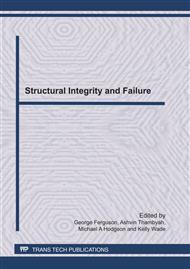p.51
p.55
p.59
p.65
p.69
p.73
p.77
p.81
p.85
Assembly Deformation and Stresses of Compliant Structures
Abstract:
Compliant components such as large sheet metal components are commonly used in various products including automotive, aircraft and home appliances. Because of part-to-part variations, deformation and stresses are induced in the assembly process. An approach to the assembly tolerance analysis of compliant structures is presented in this paper. Given component deformation, assembly deformation and stresses are derived by finite element analysis (FEA). The influence of component deformation on assembly deformation and stresses is studied by response surface methodology (RSM), and a regression model is developed. Using the developed regression model, Monte Carlo simulation was conducted to study assembly tolerance and stresses. This approach is illustrated by an example.
Info:
Periodical:
Pages:
69-72
Citation:
Online since:
July 2011
Authors:
Price:
Сopyright:
© 2011 Trans Tech Publications Ltd. All Rights Reserved
Share:
Citation:


